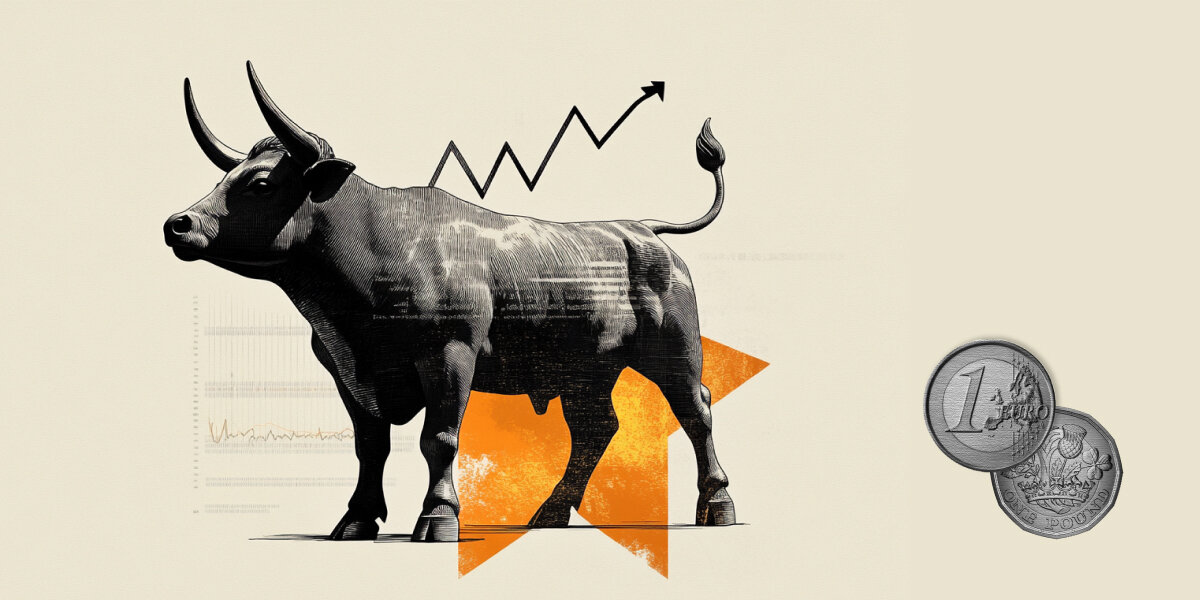Created
: 2025.04.14














![]() 2025.04.14 15:04
2025.04.14 15:04
EUR/GBP remains stronger for the third successive session, trading around 0.8670 during the Asian hours on Monday. The currency cross appreciates amid improved risk sentiment after US President Donald Trump announced less severe tariffs late Sunday on Chinese imports, including semiconductors and electronics. However, clarifying earlier speculation about exemptions, Trump confirmed these goods would remain subject to the existing 20% tariffs related to fentanyl rather than the previously suggested 145% duties.
In an interview with Handelsblatt on Saturday, German Chancellor-in-waiting Friedrich Merz expressed concern over Trump's economic approach, stating, "President Trump's policies are increasing the risk that the next financial crisis will hit sooner than expected." Merz also voiced support for a new transatlantic trade agreement, adding, "Zero percent tariffs on everything--that would be better for both sides."
The upside potential for EUR/GBP cross may be capped as the Pound Sterling (GBP) remains supported by a rise in UK 10-year gilt yields, which reached 4.76% amid ongoing volatility in global bond markets driven by escalating US-China trade tensions. China's Ministry of Finance announced a sharp tariff hike on US goods, raising duties from 84% to 125%, following President Trump's earlier move to increase tariffs on Chinese imports to 145%.
UK GDP data suggested the economy expanded by a stronger-than-expected 0.5% in February, marking the fastest monthly growth in nearly a year with broad-based gains across key sectors. The upside surprise--partly fueled by a surge in pre-tariff manufacturing--prompted investors to dial back expectations for aggressive Bank of England (BoE) rate cuts. Nonetheless, markets still anticipate at least three quarter-point reductions this year.
In the world of financial jargon the two widely used terms "risk-on" and "risk off'' refer to the level of risk that investors are willing to stomach during the period referenced. In a "risk-on" market, investors are optimistic about the future and more willing to buy risky assets. In a "risk-off" market investors start to 'play it safe' because they are worried about the future, and therefore buy less risky assets that are more certain of bringing a return, even if it is relatively modest.
Typically, during periods of "risk-on", stock markets will rise, most commodities - except Gold - will also gain in value, since they benefit from a positive growth outlook. The currencies of nations that are heavy commodity exporters strengthen because of increased demand, and Cryptocurrencies rise. In a "risk-off" market, Bonds go up - especially major government Bonds - Gold shines, and safe-haven currencies such as the Japanese Yen, Swiss Franc and US Dollar all benefit.
The Australian Dollar (AUD), the Canadian Dollar (CAD), the New Zealand Dollar (NZD) and minor FX like the Ruble (RUB) and the South African Rand (ZAR), all tend to rise in markets that are "risk-on". This is because the economies of these currencies are heavily reliant on commodity exports for growth, and commodities tend to rise in price during risk-on periods. This is because investors foresee greater demand for raw materials in the future due to heightened economic activity.
The major currencies that tend to rise during periods of "risk-off" are the US Dollar (USD), the Japanese Yen (JPY) and the Swiss Franc (CHF). The US Dollar, because it is the world's reserve currency, and because in times of crisis investors buy US government debt, which is seen as safe because the largest economy in the world is unlikely to default. The Yen, from increased demand for Japanese government bonds, because a high proportion are held by domestic investors who are unlikely to dump them - even in a crisis. The Swiss Franc, because strict Swiss banking laws offer investors enhanced capital protection.
![]()
Created
: 2025.04.14
![]()
Last updated
: 2025.04.14

FXStreet is a forex information website, delivering market analysis and news articles 24/7.
It features a number of articles contributed by well-known analysts, in addition to the ones by its editorial team.
Founded in 2000 by Francesc Riverola, a Spanish economist, it has grown to become a world-renowned information website.
We hope you find this article useful. Any comments or suggestions will be greatly appreciated.
We are also looking for writers with extensive experience in forex and crypto to join us.
please contact us at [email protected].
Disclaimer:
All information and content provided on this website is provided for informational purposes only and is not intended to solicit any investment. Although all efforts are made in order to ensure that the information is correct, no guarantee is provided for the accuracy of any content on this website. Any decision made shall be the responsibility of the investor and Myforex does not take any responsibility whatsoever regarding the use of any information provided herein.
The content provided on this website belongs to Myforex and, where stated, the relevant licensors. All rights are reserved by Myforex and the relevant licensors, and no content of this website, whether in full or in part, shall be copied or displayed elsewhere without the explicit written permission of the relevant copyright holder. If you wish to use any part of the content provided on this website, please ensure that you contact Myforex.
Myforex uses cookies to improve the convenience and functionality of this website. This website may include cookies not only by us but also by third parties (advertisers, log analysts, etc.) for the purpose of tracking the activities of users. Cookie policy